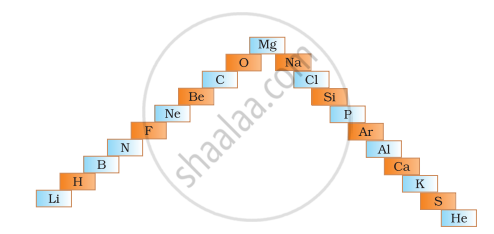Advertisements
Advertisements
Question
Give reason for the following:
The size of a Cl− ion is greater than the size of a Cl atom.
Solution
An anion gets formed when one or more electrons are gained. Thus, there are more electrons than protons. The nucleus's effective positive charge is reduced, resulting in less inward pull. As a result, the size becomes larger.
\[\ce{\underset{(2, 8, 7)}{Cl}+e- ->\underset{(2, 8, 8)}{Cl-}}\]
RELATED QUESTIONS
Give reasons for the following:
The size of the anion is greater than the size of the parent atom.
Arrange the following in order of increasing radii:
CI- , CI
Among the elements of the second period, Li to Ne, pick out the element with the largest atomic size
Arrange the following as per the instruction given in the bracket.
Mg, Cl, Na, S, Si (increasing order of atomic size)
While going from top to bottom in a group the atomic radius _______.
The size of an atom depends on the number of valence electrons.
Which of the following is the correct order of atomic size?
Which of the following gives the correct increasing order of the atomic radii of O, F and N?
Elements have been arranged in the following sequence on the basis of their increasing atomic masses.
| F, | Na, | Mg, | Al, | Si, | P, | S, | Cl, | Ar, | K |
- Pick two sets of elements which have similar properties.
- The given sequence represents which law of classification of elements?
- In below ladder symbols of elements are jumbled up. Rearrange these symbols of elements in the increasing order of their atomic number in the Periodic Table.
- Arrange them in the order of their group also.

